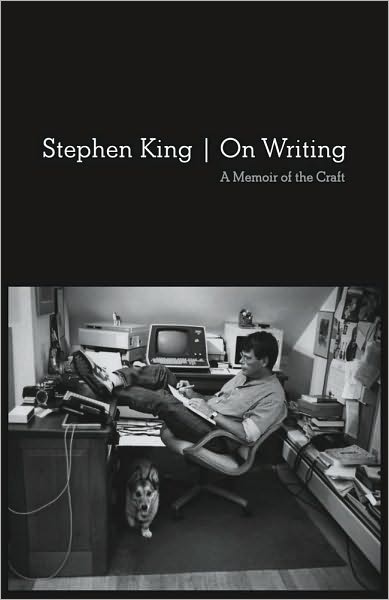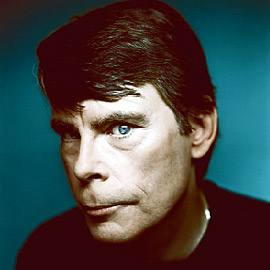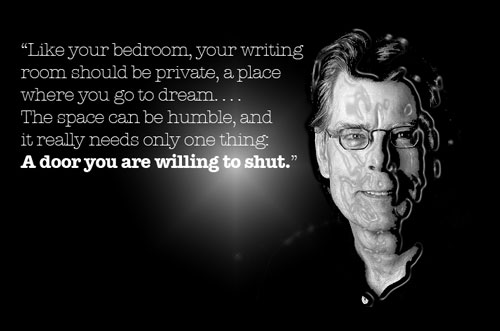 "Sleep is the greatest creative aphrodisiac," a wise woman once said. Indeed, we already know that dreaming regulates our negative emotions and“positive constructive daydreaming” enhances our creativity, while a misaligned sleep cycle is enormously mentally crippling. But can a sleep-like state in waking life, aside from lucid dreaming, actually enrich and empower our creative capacity? According toStephen King, yes: In On Writing: A Memoir on the Craft (public library), which also gave us his case against adverbs, the celebrated novelist explores the similarity between writing and dreaming. He considers the role of a daily routine – something many famous creators use to center themselves – in inducing a state of self-mesmerism that produces the paradoxical alchemy of disciplining our minds into unleashing their unrestrained creative potential, something King calls “creative sleep”:
"Sleep is the greatest creative aphrodisiac," a wise woman once said. Indeed, we already know that dreaming regulates our negative emotions and“positive constructive daydreaming” enhances our creativity, while a misaligned sleep cycle is enormously mentally crippling. But can a sleep-like state in waking life, aside from lucid dreaming, actually enrich and empower our creative capacity? According toStephen King, yes: In On Writing: A Memoir on the Craft (public library), which also gave us his case against adverbs, the celebrated novelist explores the similarity between writing and dreaming. He considers the role of a daily routine – something many famous creators use to center themselves – in inducing a state of self-mesmerism that produces the paradoxical alchemy of disciplining our minds into unleashing their unrestrained creative potential, something King calls “creative sleep”:Like your bedroom, your writing room should be private, a place where you go to dream. Your schedule – in at about the same time every day, out when your thousand words are on paper or disk – exists in order to habituate yourself, to make yourself ready to dream just as you make yourself ready to sleep by going to bed at roughly the same time each night and following the same ritual as you go.
King likens the creative process to a kind of wakeful dream state. Just like sleep shapes our every waking moment, King argues this dozing of the waking mind shapes our creative capacity by releasing our repressed imagination:
In both writing and sleeping, we learn to be physically still at the same time we are encouraging our minds to unlock from the humdrum rational thinking of our daytime lives. And as your mind and body grow accustomed to a certain amount of sleep each night – six hours, seven, maybe the recommended eight – so can you train your waking mind to sleep creatively and work out the vividly imagined waking dreams which are successful works of fiction.
Ultimately, this “creative sleep” is what allows us to cultivate our own worlds while writing – something stymied by the barrage of distractions that fill the spaces of everyday life. King offers some practical tips on warding those off in order to create the kind of still space necessary for wakeful dreaming:
The space can be humble … and it really needs only one thing: A door you are willing to shut. The closed door is your way of telling the world that you mean business. . . .
If possible, there should be no telephone in your writing room, certainly no TV or videogames for you to fool around with. If there’s a window, draw the curtains or pull down the shades unless it looks out at a blank wall. For any writer, but for the beginning writer in particular, it’s wise to eliminate every possible distraction. If you continue to write, you will begin to filter out these distractions naturally, but at the start it's best to try and take care of them before you write. … When you write, you want to get rid of the world, don't you? Of course you do. When you're writing, you're creating your own worlds.
King's advice, of course, should be taken with a grain of salt: As E. B. White poignantly put it, “a writer who waits for ideal conditions under which to work will die without putting a word on paper” – a sentiment Charles Bukowski echoed in his fantastic poem “air and light and time and space,” titled after all the conditions whose presence or absence he thought irrelevant for the true writer, an excuse rather than a necessity.
Still, On Writing remains an indispensable trove of wisdom on the craft and a fine addition to the collected wisdom of famous writers, including Elmore Leonard's 10 rules of writing, Walter Benjamin'sthirteen doctrines, H. P. Lovecraft's advice to aspiring writers, F. Scott Fitzgerald's letter to his daughter, Zadie Smith's 10 rules of writing, David Ogilvy's 10 no-bullshit tips, Henry Miller's 11 commandments, Jack Kerouac's 30 beliefs and techniques, John Steinbeck's 6 pointers, and Susan Sontag's synthesized learnings.


No comments:
Post a Comment